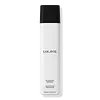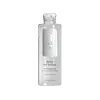What's inside
What's inside
 Key Ingredients
Key Ingredients

 Benefits
Benefits

 Concerns
Concerns

 Ingredients Side-by-side
Ingredients Side-by-side

Lactobacillus/Arundinaria Gigantea Ferment Filtrate
Skin ConditioningSodium Lauroyl Methyl Isethionate
CleansingLactobacillus Ferment
Skin ConditioningCocamidopropyl Betaine
CleansingGlycerin
HumectantSodium Cocoyl Isethionate
CleansingSodium Lauroyl Sarcosinate
CleansingSalvia Hispanica Seed Extract
EmollientCitric Acid
BufferingGlycosphingolipids
EmollientPisum Sativum Peptide
Skin ConditioningCitrus Limon Fruit Extract
MaskingMentha Piperita Leaf Extract
Skin ConditioningSaccharum Officinarum Extract
MoisturisingZingiber Officinale Root Extract
MaskingNiacinamide
SmoothingPanthenol
Skin ConditioningSaccharomyces/Copper Ferment
Skin ConditioningSaccharomyces/Iron Ferment
Skin ConditioningSaccharomyces/Magnesium Ferment
Saccharomyces/Zinc Ferment
Skin ConditioningPyrus Malus Fruit Extract
Skin ConditioningBiotin
AntiseborrhoeicCaffeine
Skin ConditioningMelatonin
AntioxidantCamellia Sinensis Leaf Extract
AntimicrobialHexapeptide-11
Skin ConditioningPolyquaternium-10
Betaine
HumectantParfum
MaskingLinalool
PerfumingLimonene
PerfumingLactobacillus/Arundinaria Gigantea Ferment Filtrate, Sodium Lauroyl Methyl Isethionate, Lactobacillus Ferment, Cocamidopropyl Betaine, Glycerin, Sodium Cocoyl Isethionate, Sodium Lauroyl Sarcosinate, Salvia Hispanica Seed Extract, Citric Acid, Glycosphingolipids, Pisum Sativum Peptide, Citrus Limon Fruit Extract, Mentha Piperita Leaf Extract, Saccharum Officinarum Extract, Zingiber Officinale Root Extract, Niacinamide, Panthenol, Saccharomyces/Copper Ferment, Saccharomyces/Iron Ferment, Saccharomyces/Magnesium Ferment, Saccharomyces/Zinc Ferment, Pyrus Malus Fruit Extract, Biotin, Caffeine, Melatonin, Camellia Sinensis Leaf Extract, Hexapeptide-11, Polyquaternium-10, Betaine, Parfum, Linalool, Limonene
Water
Skin ConditioningCocamidopropyl Betaine
CleansingSodium C14-16 Olefin Sulfonate
CleansingSodium Lauroyl Methyl Isethionate
CleansingGalactoarabinan
Salvia Hispanica Seed Extract
EmollientGlycerin
HumectantTrehalose
HumectantXylitol
HumectantPanthenol
Skin ConditioningCamellia Sinensis Leaf Extract
AntimicrobialSodium Phosphate
BufferingCaprylyl/Capryl Glucoside
CleansingNiacin
SmoothingCitrus Junos Extract
AntioxidantPanax Ginseng Extract
AntioxidantRosmarinus Officinalis Extract
AntimicrobialBiotin
AntiseborrhoeicSodium Cocoyl Isethionate
CleansingCaprylyl Glycol
EmollientGlyceryl Laurate
EmollientGlyceryl Undecylenate
EmollientWater, Cocamidopropyl Betaine, Sodium C14-16 Olefin Sulfonate, Sodium Lauroyl Methyl Isethionate, Galactoarabinan, Salvia Hispanica Seed Extract, Glycerin, Trehalose, Xylitol, Panthenol, Camellia Sinensis Leaf Extract, Sodium Phosphate, Caprylyl/Capryl Glucoside, Niacin, Citrus Junos Extract, Panax Ginseng Extract, Rosmarinus Officinalis Extract, Biotin, Sodium Cocoyl Isethionate, Caprylyl Glycol, Glyceryl Laurate, Glyceryl Undecylenate
Ingredients Explained
These ingredients are found in both products.
Ingredients higher up in an ingredient list are typically present in a larger amount.
Biotin is a B vitamin that is naturally produced by our bodies. It is also called Vitamin H.
Our bodies use biotin in the metabolism process. It also helps our bodies use enzymes and move nutrients around. A biotin deficiency can lead to brittle hair and nails.
More research is needed on applying biotin topically. However, taking biotin orally has been shown to help nourish the skin, hair, and nails. They play a role in forming skin-hydrating fatty acids.
Biotin is water-soluble. It can be found in foods such as fish, eggs, dairy, nuts, and meat. Vitamin H stands for "haar" and "haut". These are the German words for hair and skin.
Learn more about BiotinCamellia Sinensis Leaf Extract is derived from the leaves of the tea plant. Black tea, green tea, and oolong tea are all harvested from this plant.
This ingredient has many skin benefits:
This ingredient contains polyphenols, a strong antioxidant. Antioxidants help fight off molecules that damage skin cells.
On top of that, the antioxidants in green tea neutralize free-radicals from the sun. This gives the skin some extra UV protection, but should not replace sunscreen.
Many components of tea have anti-inflammatory properties.
Polyphenols and L-theanine help soothe the skin and reduce irritation. The caffeine in Camellia Sinensis Leaf Extract helps calm inflamed blood vessels.
Other compounds found in tea include: Vitamin Bs, linoleic acid, magnesium, calcium, iron, and zinc.
Research has shown both drinking Camellia Sinensis Leaf Tea and applying it to the skin can help boost skin elasticity and hydration. Studies also show using tea extract may reduce sebum, or oil, production.
Learn more about Camellia Sinensis Leaf ExtractCocamidopropyl Betaine is a fatty acid created by mixing similar compounds in coconut oil and dimethylaminopropylamine, a compound with two amino groups.
This ingredient is a surfactant and cleanser. It helps gather the dirt, pollutants, and other impurities in your skin to be washed away. It also helps thicken a product and make the texture more creamy.
Being created from coconut oil means Cocamidopropyl Betaine is hydrating for the skin.
While Cocamidopropyl Betaine was believed to be an allergen, a study from 2012 disproved this. It found two compounds in unpure Cocamidopropyl Betaine to be the irritants: aminoamide and 3-dimethylaminopropylamine. High-grade and pure Cocamidopropyl Betaine did not induce allergic reactions during this study.
Learn more about Cocamidopropyl BetaineGlycerin is already naturally found in your skin. It helps moisturize and protect your skin.
A study from 2016 found glycerin to be more effective as a humectant than AHAs and hyaluronic acid.
As a humectant, it helps the skin stay hydrated by pulling moisture to your skin. The low molecular weight of glycerin allows it to pull moisture into the deeper layers of your skin.
Hydrated skin improves your skin barrier; Your skin barrier helps protect against irritants and bacteria.
Glycerin has also been found to have antimicrobial and antiviral properties. Due to these properties, glycerin is often used in wound and burn treatments.
In cosmetics, glycerin is usually derived from plants such as soybean or palm. However, it can also be sourced from animals, such as tallow or animal fat.
This ingredient is organic, colorless, odorless, and non-toxic.
Glycerin is the name for this ingredient in American English. British English uses Glycerol/Glycerine.
Learn more about GlycerinPanthenol is a common ingredient that helps hydrate and soothe the skin. It is found naturally in our skin and hair.
There are two forms of panthenol: D and L.
D-panthenol is also known as dexpanthenol. Most cosmetics use dexpanthenol or a mixture of D and L-panthenol.
Panthenol is famous due to its ability to go deeper into the skin's layers. Using this ingredient has numerous pros (and no cons):
Like hyaluronic acid, panthenol is a humectant. Humectants are able to bind and hold large amounts of water to keep skin hydrated.
This ingredient works well for wound healing. It works by increasing tissue in the wound and helps close open wounds.
Once oxidized, panthenol converts to pantothenic acid. Panthothenic acid is found in all living cells.
This ingredient is also referred to as pro-vitamin B5.
Learn more about PanthenolWe don't have a description for Salvia Hispanica Seed Extract yet.
Sodium cocoyl isethionate is a natural ingredient from coconut oil. It is an ultra gentle cleanser that gives a nice foam without drying the skin or impacting the skin barrier.
The amount of foam created depends on the amount of sodium cocoyl isethionate used in the product.
This ingredient also helps improve the spreadability of a product.
Learn more about Sodium Cocoyl IsethionateSodium Lauroyl Methyl Isethionate is a cleansing ingredient. It is a surfactant, meaning it helps gather dirt, oil, and other pollutants. This helps them be rinsed away easily.